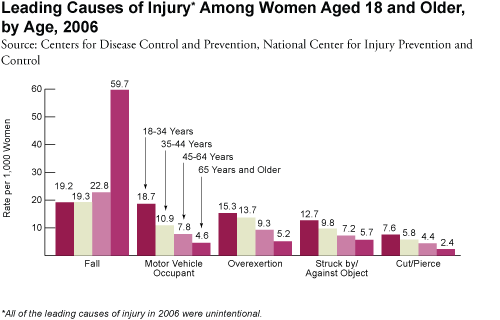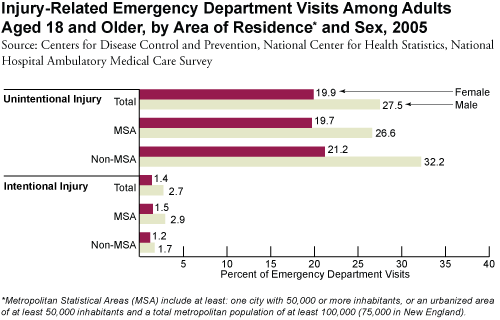More and more jurisdictions are moving to a more equal system in marital breakdown instead of the winner take all in Canada that awards a single gender over 90% of chidren's physical custody. Australia's system is an improvement but not a complete model. Only 15% of cases result in 50-50 custody. That is certainly better than before and far better than the sorry state of affairs in this country brought about by lawyers and judges. We do have some centres in Canada that could easily become similar to the OZ Family Relationship Centres. One good example is the Calgary Counselling Centre. Belgium's model is one of the best with a presumption of equality from the start.I too share the dream of Mr. Parkinson. One day perhaps we can set up centres to act as the first line of defense for saving families from the disaster of family law. We have first responders for Fire, Police and Health emergencies. Family breakdown is a crisis of major proportions and money needs to be invested in 1) saving marriages that can be saved 2) If abuse is involved get family counselling instead of the current paradigm of providing $208,000,000.00, in Ontario alone for a single gender. This is not working 3)Treat each member of the family equally but truly look at the best interest of children. Currently that appears to award custody physically to mom and marginalize dads as visitors 4) if abuse, physical and/or emotional cannot be curtailed the non-abusive parent gets custody. 5) Include a follow-up appointment process to let parents and children know they are not forgotten and alone. 6) As they do in Belgium severe penalties for with holding access. That is equivalent to kidnapping there and jail can result for the abductor. You can be ensured it will only happen once, if at all.
Often the canard of male abuser - female benign is brought up as an issue for shared parenting. It is a non-logical argument. Stats Can reports abuse between genders as pretty much equal. It impacts about 8% of women and 7% of men. Lets turn that around. It doesn't impact 92% of women and 93% of men. The logic of not having shared parenting when 92-93% of the population is not affected makes no sense. Lets start acting logically instead of the shrieking we hear from certain quarters. See my earlier posts on dealing with abuse.MJM

RICHARD LAUTENS / TORONTO STAR
Alfred Mamo, a lawyer in London, Ont., says the province’s family court system has gotten worse in the past decade. It’s “making people crazy,” he says.
Where separation occurs without anxiety
October 07, 2009
Susan Pigg
living reporter
It seems that Australia isn't all that different from Canada – except, of course, for the accents and the kangaroos.
About 40 per cent of marriages end in divorce, weddings are on the decline in favour of living common law, and a lot of couples don't know where to turn when their relationship ends.
Well, at least they didn't until 2006.
That's when the Australian government launched one of the most ambitious set of divorce reforms in the world, aimed at putting family first and providing a raft of supports for couples, whether they're just starting out, or struggling to save their marriage, or trying to shield their children from separation flak.
In the past three years, 65 Family Relationship Centres have opened across the land Down Under. The well-marked storefronts, located in high-traffic city centres, are the backbone of some $400 million in family law reforms meant to ease the pressure on overburdened courts, reverse the phenomenon of "disappearing dads," and ensure divorce is as painless as possible for children.
"They're part of a 20-year cultural change – the first port of call for people managing the transition from parenting together to parenting apart," says University of Sydney law professor Patrick Parkinson, who pushed the previous, John Howard government for the new approach over pumping more money into the courts.
The program is meant to be one-on-one, recognizing that the worst moments for separated couples and their kids are the first hours and days after one partner announces they're leaving.
It's also meant to be affordable. Everyone who walks through the door, or calls the toll-free line, is entitled to three free hours of help every two years, whether it be on-site counselling and mediation or off-site specialized services. After that, costs are based on ability to pay.
Walk in the door of a Family Relationship Centre and you are greeted by a "parenting counsellor" rather than a wall of pamphlets. Their job is to get a sense of your personal situation and how it's playing out for your family, and to assess what help you need to start moving ahead.
The centres are meant to act as triage units for ex-partners who may be hobbled by mental health issues and addictions, or children acting out because of prolonged family conflict. "They will not close that file until they are certain that person has got the help they need," says Parkinson.
Mediation is a mandatory first step, a move aimed at making the costly and adversarial court system a "mechanism of last resort."
The last of the centres opened last year, and already Australia has seen an 18 per cent drop in court filings, Parkinson says.
The reforms included legislative changes aimed at making shared parenting the norm (except if there are extenuating circumstances such as violence in the home, mental health issues or addictions) and support payments more equitable.
The idea is to give ex-partners much-needed flexibility, and the peace of mind that comes from knowing they can go back to the centre in a few weeks, or even years, to tweak details or change custody arrangements without the expense of hiring a lawyer and going to court.
The reforms were inspired in part by a 2003 national survey that pointed to a worrisome trend. It found that 36 per cent of 1,000 separated men interviewed hadn't seen their children in the previous year – because of conflict with their ex-spouses, distance, economics or remarriages – although 80 per cent of them wanted to.
As well, MPs were being deluged with calls from constituents upset about divorce issues and their treatment in the family court system.
But, most of all, there were growing fears that family breakdown and conflict was resulting in increased social problems among kids – from drug abuse to gang activity – and more children being taken into foster care, says Parkinson.
Out of those concerns came a national commission, 1,700 submissions and the landmark "Every Picture Tells a Story Report" – not unlike Canada's 1998 report, "For the Sake of the Children."
The only difference? Australia moved on its commission's recommendations, while most of them remain shelved here in Canada.
Family law lawyers such as Alfred Mamo of London, Ont., contend things here have gotten worse over the past decade.
Many of Ontario's family courts are on the brink of breakdown thanks to a perfect storm of problems: a shortage of judges, lengthy court dockets and a woefully inadequate Legal Aid system that is forcing more litigants to represent themselves, with no understanding of complex family law, rules of evidence or even what documents they need.
Judges complain that has added to the chaos by necessitating adjournments that drag out cases and drive up costs.
The result is a two-tier system of justice in Ontario. Couples who can afford it are flocking to costly private mediation and arbitration to avoid getting bogged down in court. Everyone else is mired in a legal system that's so slow and unpredictable, it can take a child's lifetime and the couple's life savings before a judge finally makes a ruling. Many lawyers believe that's actually ratcheting up tension and adding to the number of high-conflict divorces and allegations of parental alienation.
"The lawyers need to own some of this," says Mamo, echoing litigants who blame attorneys for dragging out cases to make more money. Lawyers call it "milking the file."
In defence of his profession, Mamo adds: "To some degree we're in the cancer business. You want to help everybody, but the reality is you can't because human emotions are just so complicated and there are so many variables.
"We could be doing a lot better, though, there's no doubt about that."
Just 2 to 3 per cent of all disputes end up in full-blown trials, but that's largely because litigants go broke first.
In especially overloaded courts in high-growth areas such as Newmarket, Brampton and Barrie, judges are often expected to plow through 25 to 40 cases a day. Litigants complain they can spend hours – and thousands of dollars on a lawyer – waiting for just 15 minutes before a judge and another months-long adjournment.
"The system is making people crazy," says Mamo, who co-authored a study of the courts two years ago.
University of Western Ontario professor Peter Jaffe, who worked with Mamo on that study, describes family courts as "restaurants without kitchens.
"You can ask for anything you want, but in the end all they have is a couple of items, hamburgers and hot dogs," says Jaffe, word academic director of the university's Centre for Research & Education on Violence Against Women and Children.
Some 17 of the more than 80 family courts in Ontario have on-site mediators, and they have diverted some couples from the courtroom and toward a workable settlement. But the much-lauded Family Law Information Centres – court-based services that were intended to act somewhat like Australia's Family Relationship Centres – are, in most courts, little more than pamphlet booths.
Duty counsel, who are supposed to help ensure litigants are properly prepared for their first court appearance, usually have time for just 20 minutes per client. Volunteer law students pick up some of the slack, but just in major centres like Toronto and London.
"We can't tinker – the system is broken and needs very significant reform," says well-respected family law lawyer Philip Epstein.
Ontario Attorney General Chris Bentley recognizes the need for reform, and says the government has been pressing Ottawa to help – especially in appointing more judges – since 2004.
He's been meeting with family law experts to see what Ontario can do on its own, and quickly. He's already announced $150 million more in legal aid, most of it for family law, but lawyers complain that's far from enough.
Australia's Parkinson is determined that, over time, the Family Relationship Centres will become more than just after-separation services for couples. His dream is that they help prevent family breakdown.
He takes pride in simple signs of progress – like the four filing cabinets that line one wall of the centre in the seaside industrial city of Wollongong, 1 1/2 hours south of Sydney.
Three of them are packed with the case files of separated couples. The fourth is full of families working hard, with the help of centre staff, to save their marriages.
Read more from this series:
Divorced dads can't catch a break
The good divorce: Equally shared parenting
Kids hit hard in nasty divorces
Grandparents go to court for access to grandchildren
http://www.parentcentral.ca/parent/articlePrint/706400














